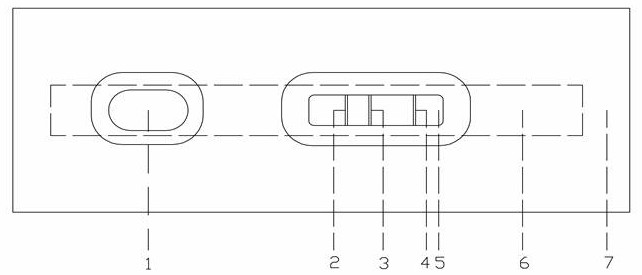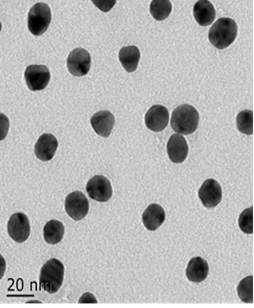Detection card for simultaneously detecting aflatoxin B1 and zearalenone
A technology of zearalenone and aflatoxin, which is applied in the direction of measuring devices, instruments, scientific instruments, etc., can solve the problems of expensive operation of instruments and equipment, difficulty in being suitable for ordinary personnel, and inconvenient detection, so as to ensure food safety, The effect of simple method and convenient operation
- Summary
- Abstract
- Description
- Claims
- Application Information
AI Technical Summary
Problems solved by technology
Method used
Image
Examples
preparation example Construction
[0053] Preparation of test card:
[0054] (1) Preparation of colloidal gold solution: take a 150mL triangular flask, treat it with aqua regia overnight, add 100mL ultrapure water, and then add 1% chloroauric acid (HAuCl 4 •3H 2 (0) 1mL, prepared into 100mL 0.01% chloroauric acid aqueous solution, magnetically heated and stirred until the solution boiled for 2min, then immediately added 0.8ml 2% trisodium citrate (Na 3 C 6 h 5 o 7 • 2H 2 (0) solution, continue to stir and heat, when the color of the solution turns into transparent purple red completely, keep the solution boiling for about 2min, stop heating, stir and cool at room temperature, store it for later use at 4°C, and pass the prepared colloidal gold solution through ultraviolet scanning and transmission Microscope for evaluation.
[0055] The evaluation method is to scan the colloidal gold with an ultraviolet spectrophotometer to obtain the maximum absorption peak wavelength and peak width, and observe the parti...
Embodiment 1
[0066] The feed was mixed with different qualities of aflatoxin B1 and zearalenone, and 6 kinds of toxin feeds and blank controls were prepared and numbered: the content of aflatoxin B1 in feeds numbered 1-3 was 50, 100, 200µg / kg, 5-7 contain zearalenone, the content is 100, 200, 500µg / kg in turn, and Nos. 4 and 8 are blank controls. Two kinds of toxin detection cards were used to detect 7 samples with the above detection method, and each sample was repeated 3 times. The results are shown in Table 1.
[0067] From the results, it can be seen that the recovery rate of aflatoxin B1 in feed samples by the test cards of the two toxins ranges from 92.0-117.0%, and the coefficient of variation is 2.25%-3.41%; the recovery rate range of zearalenone in feed samples is 93.4-106.7%, and the coefficient of variation is 2.69%-4.82%. In summary, the recovery rate variation range of the two toxin test cards is within 25%, and the variation coefficient is within 15%, indicating that the test...
Embodiment 2
[0071] Randomly select 10 types of market feeds, use two kinds of toxin detection cards, test 10 feed samples with the above detection method, set up a blank control, repeat 3 times for each, and compare the results with the HPLC test results (Table 2). The results show that the coincidence rate of the two is 100%, and when the aflatoxin B1 content in the feed is lower than 100 (µg / kg) and the zearalenone content is lower than 500 (µg / kg), the detection card of the present invention It has advantages in sensitivity.
[0072] Table 2 Comparison of two kinds of toxin test cards to determine feed results and instrument results
[0073]
PUM
 Login to View More
Login to View More Abstract
Description
Claims
Application Information
 Login to View More
Login to View More - R&D
- Intellectual Property
- Life Sciences
- Materials
- Tech Scout
- Unparalleled Data Quality
- Higher Quality Content
- 60% Fewer Hallucinations
Browse by: Latest US Patents, China's latest patents, Technical Efficacy Thesaurus, Application Domain, Technology Topic, Popular Technical Reports.
© 2025 PatSnap. All rights reserved.Legal|Privacy policy|Modern Slavery Act Transparency Statement|Sitemap|About US| Contact US: help@patsnap.com



